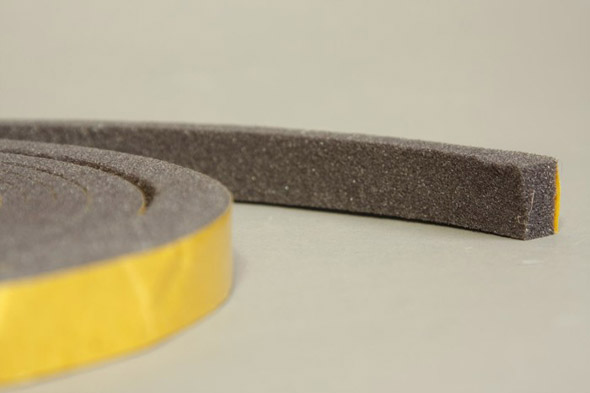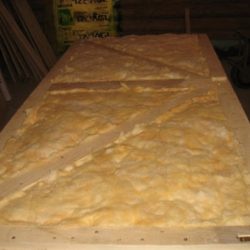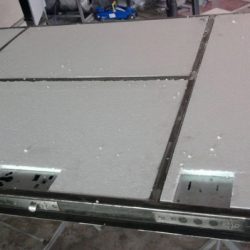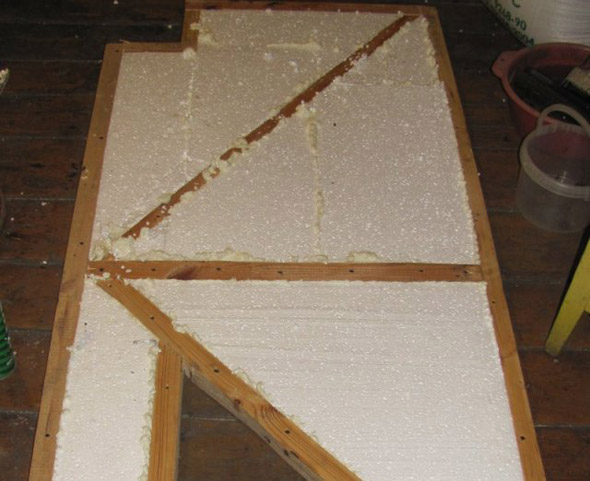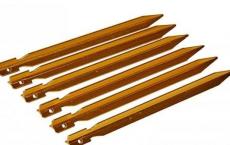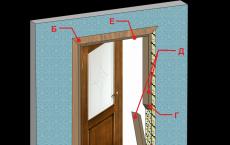How and with what you can insulate the doors with your own hands
The front door in a private house is one of the main sources of heat loss. In order not to freeze in winter, you need to take care of its warming in advance. In this article, we will consider what materials are best used as insulation (felt, foam rubber, polystyrene foam), how to qualitatively and simply insulate the door with your own hands, upholster it with leatherette and close the gaps with self-adhesive tape.
What insulation for the front door is better to choose
There are several ways to insulate the front door for the winter, the best is upholstery. For this, the following materials are used:
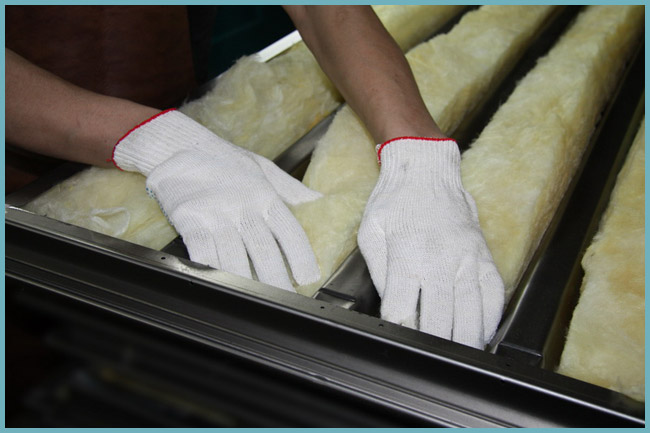
It can be noted that manufacturers of doors with a thermal break use polystyrene as a heater. These doors include the well-known line of doors "Nord", which has proven itself in the market, from the Moscow manufacturer of entrance doors "ProfMaster".
We insulate the iron door with foam panels
Usually, metal doors are made of sheet material welded on the sides with corners, that is, they have voids inside that must be filled from the inside for additional insulation.
The insulation technology is as follows:
- We take the dimensions of the door leaf (width and length) along which we will cut out the panel from fiberboard to close the foam layer.
- We transfer the dimensions of the door leaf, the location and dimensions of the peephole and handle to plywood from fiberboard, cut openings for them.
- We apply the panel to the door, checking the correctness of all marks.
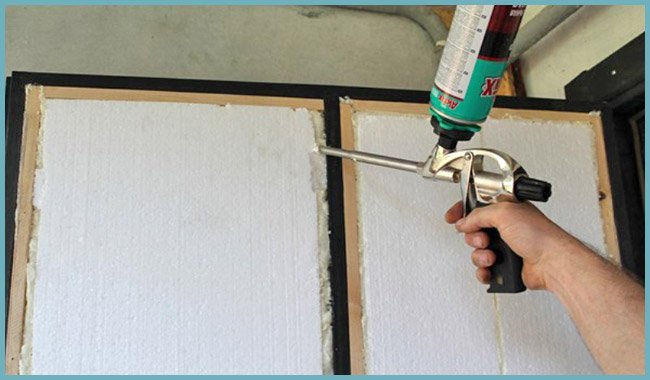
Insulation of an iron door with foam plastic
- Using a sharp knife, cut out sheets of styrene foam to glue them to the inside of the door leaf. This insulation is glued with silicone, which is applied in a dense uniform layer over the entire surface.
Advice! The thickness of the foam is determined by the size of the corner shelf.
- Now you can close the foam with a fiberboard panel. We put a bit on the screwdriver and fasten the fiberboard to the door leaf with screws.
- The stiffening ribs of a metal door are made of a hollow tube, in winter it freezes and the effect of a "refrigerator" is obtained. To prevent this from happening, it is filled from the inside with mounting foam. To do this, a hole is made in the pipe with a drill, where the foam is poured.
Attention! If you want to thoroughly insulate the wall, the gaps between the foam sheets can also be filled with mounting foam.
We insulate the front door with foam rubber
To insulate the front door made of wood, foam rubber can be used from the outside. For this you need:
- Remove the door frame from the hinges and place it on a flat horizontal surface, such as stools. Then remove all the protruding parts of the door (lock, eye hole, handle).
Advice! Before insulating the door with foam rubber, cover the door leaf with an iron sheet to strengthen it.
- Next, you need to make a base for the rollers needed to plug the hole between the door and the box. For doors that open outward, 3 strips 140 mm wide are cut out of leatherette, of which the length of the first is equal to the length of the door, and the other 2 are its width. Three strips are nailed with carnations along the edge of the door frame, having previously stepped back from the edge of 15 mm. The side on which the loops are located is not upholstered. For doors that open inward, 4 strips 140 mm wide are cut out and nailed on all sides.
- From cotton wool, you need to make bundles with a diameter of 30 mm, wrap them in leatherette, nailed from below, and nail the resulting roller at the very edge of the door.
- Next, sheets of foam rubber are laid on top of the door leaf.
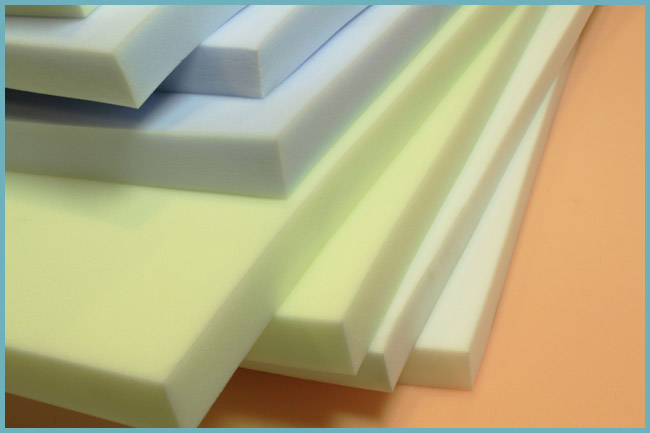
- From leatherette, you need to cut the canvas according to the parameters of the door, plus 10 cm on each side. Lay the leatherette on top of the insulation and nail it, first the side corners, and then the bottom and top
- Next, you need to make the remaining three rollers (this applies to doors that open outward) and nail them so that the upper edge of the upholstery overlaps the lower one.
- Then you can nail the panel along the entire perimeter, ending with the edge on which the loops are located.
Advice! You can decorate the door leaf by nailing carnations with hats according to a specific pattern. This way of “decorating” the door prevents the foam rubber from settling.
- At the end, you need to cut holes for all the protruding parts of the door, fix the handle in place and you can hang the door back on its hinges.
Foam insulation
An equally effective way to protect the doorway from cold air is to use mounting foam:
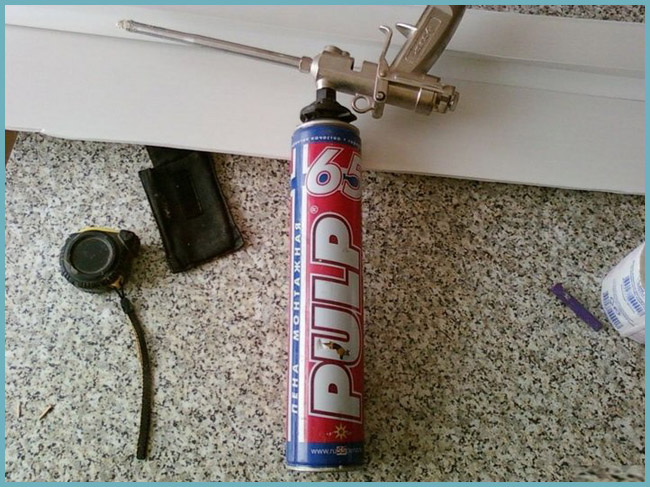
Foam gun
- Buy a foam gun, medium size.
- Tape the border of the door with construction tape, including the door itself, the frame and the wall.
- Pour mounting foam into the inner and outer perimeter of the door, making sure that there are no voids between the door frame and the wall.
- Then, using sandpaper and a knife, remove excess foam.
- At the end, the joints are puttied and painted to match the color of the walls of the house.
How to use the gasket
The rubber gasket covers the gap between the door frame and the door leaf. Such a gap remains even when the door is closed, and up to 20% of heat escapes through it. To prevent this you need:
- Measure the perimeter of the door frame, this figure will be equal to the length of the tape. The width is equal to the size of the contact between the frame and the door leaf (rebate width), and the thickness is equal to the width of the gap between the leaf and the door.
Advice! It is problematic to measure the width of the fold, but this can be done using plasticine. It is placed between the door and the box and closed. After that, it is removed and measurements are taken.
- We remove the paper that protects the sticky side from the sealing gasket, and smooth it around the entire perimeter of the door frame fold.
Thus, you can insulate the door by upholstering it with insulation and closing the joints with sealing tape. If these methods do not help, you need to check the correct installation of the door leaf and the absence of holes in the mounting foam used during installation.
Do-it-yourself insulation of the front door: video
How to insulate entrance doors: photo
